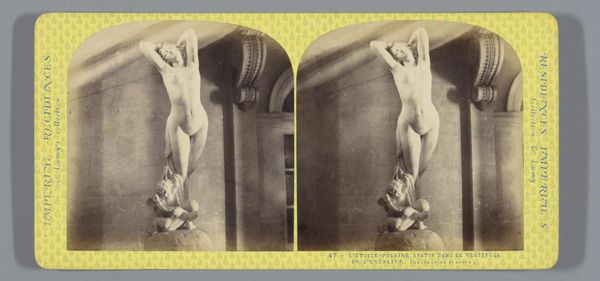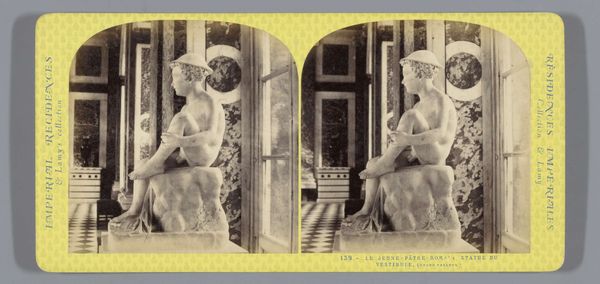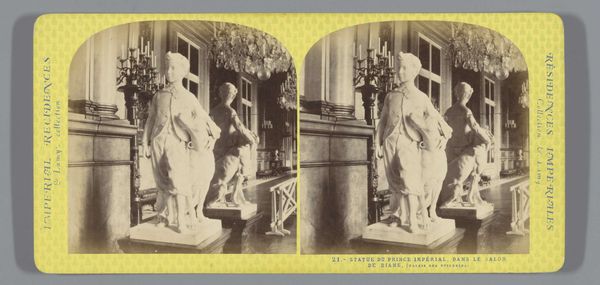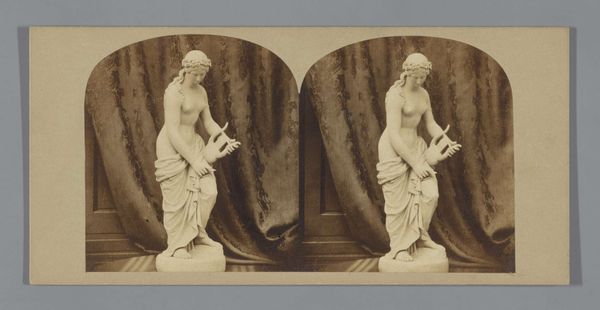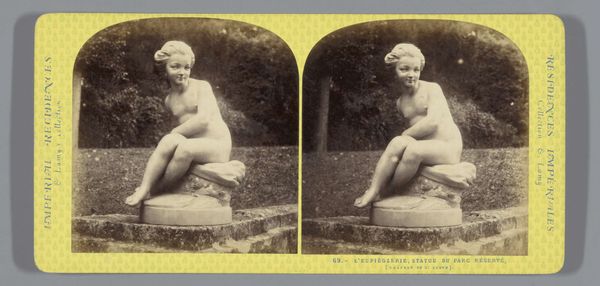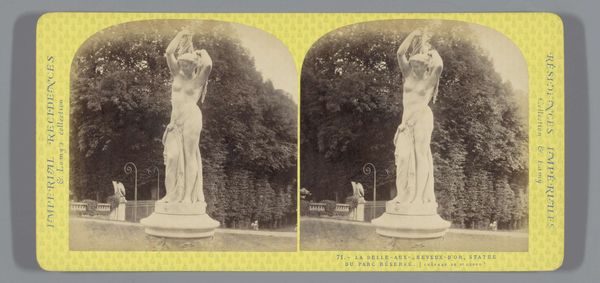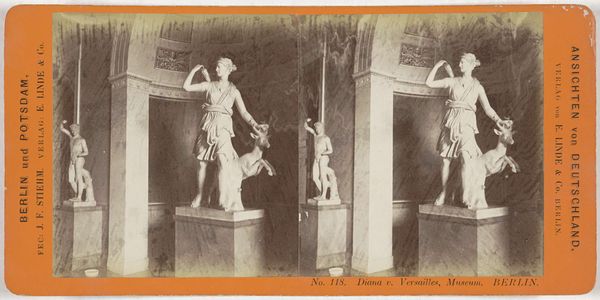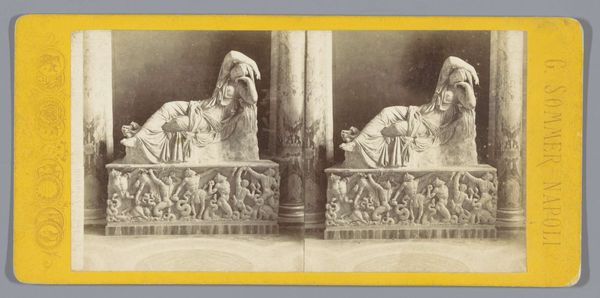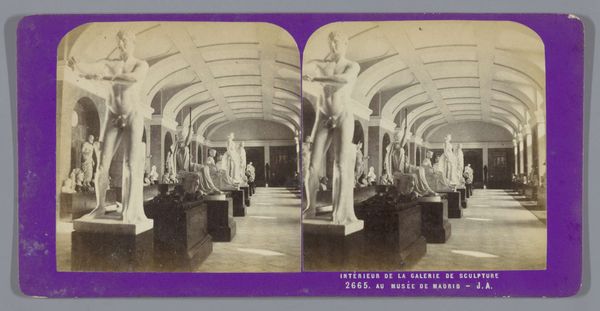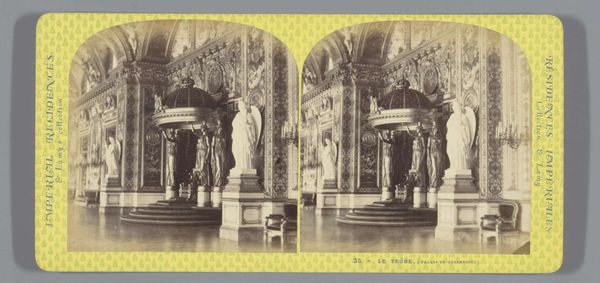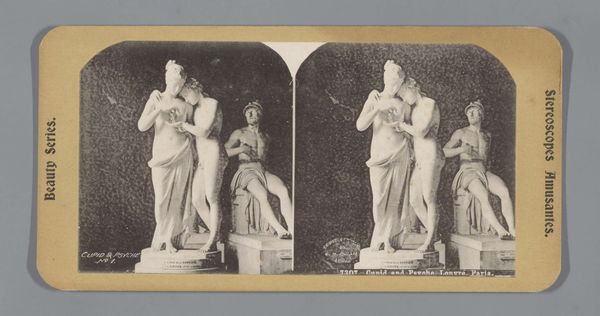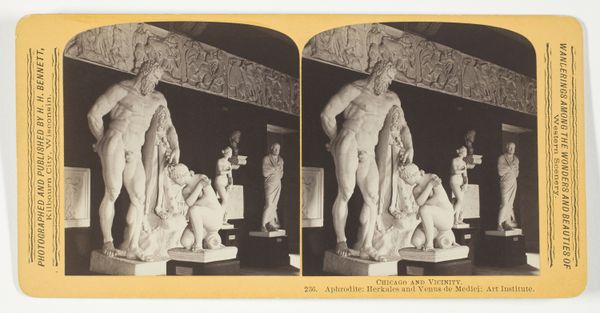
Sculptuur in de vestibule van het Grand Trianon, voorstellende Amor c. 1860 - 1880
0:00
0:00
photography, sculpture
#
portrait
#
photography
#
classicism
#
sculpture
Dimensions: height 85 mm, width 170 mm
Copyright: Rijks Museum: Open Domain
Curator: Ah yes, “Sculptuur in de vestibule van het Grand Trianon, voorstellende Amor,” taken between 1860 and 1880, attributed to Ernest Eléonor Pierre Lamy. I must say, seeing this image conjures a sense of stillness, and yet a playful air with the depiction of Cupid in a regal setting. How would you interpret this artwork in relation to its original context? Editor: It strikes me how this photograph almost immortalizes a copy of a classical sculpture within a specific historical moment, a kind of doubling of artistic representation. Does the act of photographing sculpture serve a particular cultural purpose during this period? Curator: Absolutely. The proliferation of photography in the mid-19th century democratized access to art and culture. While the original sculpture was placed in the Grand Trianon, an exclusive space embodying royal power, Lamy’s photograph allowed a wider audience to "possess" a piece of that world, though in a mediated form. The photograph thus takes on a life of its own, detached from the object. How does this mass reproducibility alter the experience, and therefore the significance of the artwork, would you say? Editor: I imagine that it changes the aura, if that’s the right term. Suddenly, it's not about being in the presence of this specific object; it’s about owning an idea of it, divorced from its spatial and temporal context. Was this photographic reproduction seen as a positive democratizing force, or were there concerns about diluting the "authenticity" or power of the original artwork and location? Curator: There were definitely anxieties. Critics worried about the decontextualization of art and the potential for misinterpretation when images circulated without proper scholarly or curatorial framing. Consider, for instance, how Lamy chose to represent this sculpture: the angle, the lighting, and the surrounding vestibule all contribute to a specific narrative, possibly aligning the viewer with certain ideological perspectives or aesthetic preferences that the photographer had in mind. This isn’t a neutral documentation. Editor: That makes so much sense! The composition actively shapes our understanding. I suppose the politics of the gaze, even then, were quite potent. I'll remember this image of Amor from this perspective. Curator: Indeed. Considering the broader societal forces at play, this piece exemplifies how photography actively reshaped cultural access and appreciation during a period of rapid technological change. I will keep it in mind moving forward as well.
Comments
No comments
Be the first to comment and join the conversation on the ultimate creative platform.
